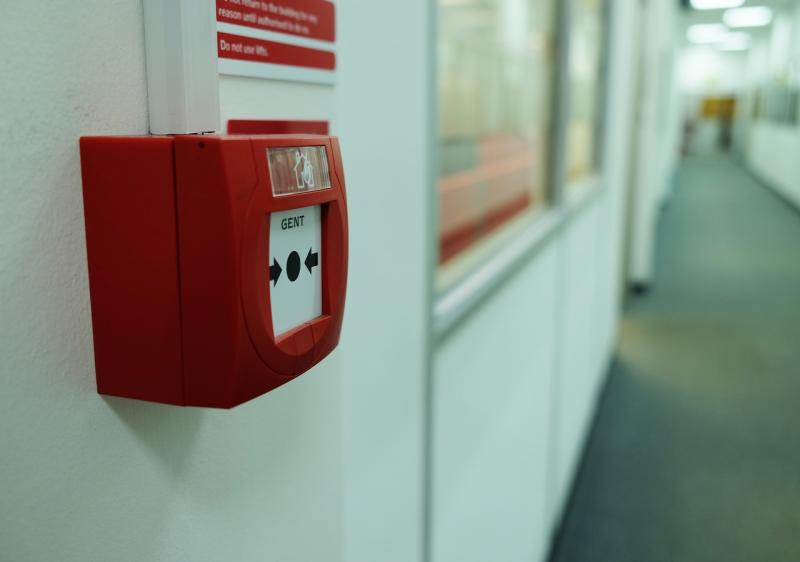Fire safety is a critical concern for property owners and managers in London, particularly when it comes to ensuring that fire alarm systems meet safety standards. Regular Fire Alarm Testing London is essential for protecting lives and property. This blog will provide an overview of the key regulations, best practices, and steps to ensure fire alarm systems in London are compliant with safety standards.
Contents
- 1 Understanding Fire Safety Regulations in London
- 2 The Role of the London Fire Brigade
- 3 Key Components of a Fire Alarm System
- 4 Smoke and Heat Detectors
- 5 Fire Alarm Control Panel
- 6 Manual Call Points
- 7 Alarm Sounders and Visual Alarms
- 8 Steps to Ensure Fire Alarm Compliance
- 9 Conducting a Fire Risk Assessment
- 10 Installing and Upgrading Fire Alarm Systems
- 11 Regular Maintenance and Testing
- 12 Keeping Detailed Records
- 13 Educating Occupants
- 14 Addressing Common Challenges
- 15 Conclusion
Understanding Fire Safety Regulations in London
Fire safety regulations in London are governed by a combination of national and local guidelines. The primary regulatory framework is the Regulatory Reform (Fire Safety) Order 2005, which sets out the responsibilities of building owners and managers to ensure fire safety. This order applies to almost all non-domestic premises and includes measures for fire detection, emergency routes and exits, fire fighting, and evacuation procedures.
The Role of the London Fire Brigade
The London Fire Brigade (LFB) plays a crucial role in enforcing fire safety standards. They conduct regular inspections and provide guidance on compliance with fire safety regulations. Property owners and managers should work closely with the LFB to ensure their fire alarm systems meet the necessary standards and are regularly inspected.
Key Components of a Fire Alarm System
A compliant fire alarm system in London must include several key components. These components work together to detect and respond to fire hazards, ensuring the safety of occupants and minimizing property damage.
Smoke and Heat Detectors
Smoke and heat detectors are essential for early fire detection. These devices should be strategically placed throughout the building to ensure comprehensive coverage. In London, it is recommended to install smoke detectors in all habitable rooms, hallways, and common areas. Heat detectors are particularly useful in kitchens and other areas where smoke detectors might produce false alarms.
Fire Alarm Control Panel
The fire alarm control panel is the central hub of the fire alarm system. It receives signals from detectors and triggers alarms to alert occupants. The control panel should be easily accessible and regularly tested to ensure it is functioning correctly.
Manual Call Points
Manual call points, or fire alarm pull stations, allow occupants to manually activate the fire alarm system in case of an emergency. These should be installed at key points throughout the building, such as near exits and in high-traffic areas.
FOR INFORMATIVE CONTENT VISIT.. : Christmas gifts
Alarm Sounders and Visual Alarms
Alarm sounders and visual alarms alert occupants to the presence of a fire. Sounders should be loud enough to be heard throughout the building, and visual alarms, such as flashing lights, should be used in areas where loud noises might not be heard or for occupants with hearing impairments.
Steps to Ensure Fire Alarm Compliance
Ensuring fire alarm systems in London meet safety standards involves several critical steps. Property owners and managers should follow these steps to maintain compliance and ensure the safety of their buildings.
Conducting a Fire Risk Assessment
The first step in ensuring fire alarm compliance is conducting a thorough fire risk assessment. This assessment identifies potential fire hazards and evaluates the effectiveness of existing fire safety measures. It should be conducted by a competent person with knowledge of fire safety regulations and building design.
The fire risk assessment should include a review of the fire alarm system, including the placement and functionality of detectors, control panels, manual call points, and alarms. Any deficiencies identified during the assessment should be addressed promptly.
Installing and Upgrading Fire Alarm Systems
Based on the findings of the fire risk assessment, property owners may need to install new fire alarm systems or upgrade existing ones to meet safety standards. When installing or upgrading fire alarm systems, it is essential to use certified equipment and hire qualified professionals to ensure compliance with regulations.
Regular Maintenance and Testing
Regular maintenance and testing are crucial for ensuring that fire alarm systems remain operational. Property owners and managers should establish a maintenance schedule that includes regular inspections, testing, and servicing of fire alarm components.
Testing should be conducted at least once a year, with more frequent testing recommended for larger or more complex buildings. During testing, all components of the fire alarm system should be checked to ensure they are functioning correctly. This includes verifying that smoke and heat detectors are responsive, manual call points are operational, and alarms are audible and visible.
Keeping Detailed Records
Proper documentation is essential for demonstrating compliance with fire safety regulations. Property owners and managers should keep detailed records of all fire risk assessments, installations, upgrades, maintenance, and testing activities. This documentation should include dates, descriptions of work performed, and any issues identified and addressed.
Maintaining thorough records can help property owners in the event of an inspection or legal inquiry. It provides evidence that the owner has taken appropriate steps to ensure fire safety and comply with regulations.
Educating Occupants
Educating occupants about fire safety is an important part of ensuring fire alarm compliance. Property owners and managers should provide tenants and employees with information on how to respond to a fire alarm, including evacuation procedures and emergency contact numbers. Occupants should also be informed about the location of fire alarms, manual call points, and emergency exits.
Regular fire drills can help occupants become familiar with evacuation routes and procedures. Property owners and managers should coordinate with occupants to schedule these drills and ensure that everyone understands their role in maintaining fire safety.
Addressing Common Challenges
Ensuring fire alarm systems meet safety standards in London can be challenging, particularly for property owners with multiple buildings or older properties. Common challenges include outdated equipment, limited access to professional installers, and navigating complex regulations.
To address these challenges, property owners should prioritize fire safety and allocate sufficient resources for compliance efforts. Working with experienced professionals and staying informed about regulatory changes can help property owners overcome obstacles and maintain compliance.
Conclusion
Ensuring fire alarm systems meet safety standards in London is a vital responsibility for property owners and managers, especially when it comes to meeting the requirements set forth by London Property Inspections. By understanding the regulations, conducting thorough fire risk assessments, installing and maintaining reliable fire alarm systems, and educating occupants, property owners can ensure the safety of their buildings and occupants. Compliance not only protects lives but also mitigates legal and financial risks. By prioritizing fire safety, property owners contribute to creating a safer environment for everyone in London, If you want to stay updated with posts like this, please follow us on HSNIME.






